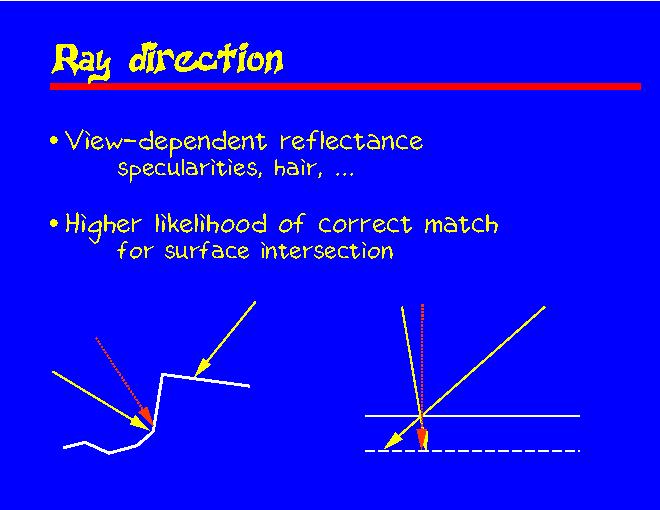Click slide for next, or goto previous, first, last slides or back to thumbnail layout.

Click slide for next, or goto previous, or back to thumbnail layout.
Click slide for next, or goto previous, first, last slides or back to thumbnail layout.

Click slide for next, or goto previous, or back to thumbnail layout.
But not all rays aiming at the same point are equal, the direction matters.
The first reason is quite obvious: some materials look different from different directions (e.g., shiny objects, hair, ...)
The second, and in our case, a more important reason, is that when the geometric model only approximates the true surface, using rays almost parallel to the query ray can reduce how often and how large errors are likely to happen.
On the left one of the rays sees the same surface point as the query ray, while the ray with a different direction cannot see that point due to self-occlusion. The likelihood of this happening increases with the difference in direction.
The situation on the right is less obvious. Both of the yellow rays see the 3D point where we think the query ray intersects the surface. But what happens if the surface is actually it further away, at the dashed line? The ray that is almost parallel to the query ray still intersects the surface close to where the query ray does, while the other ray is far off.